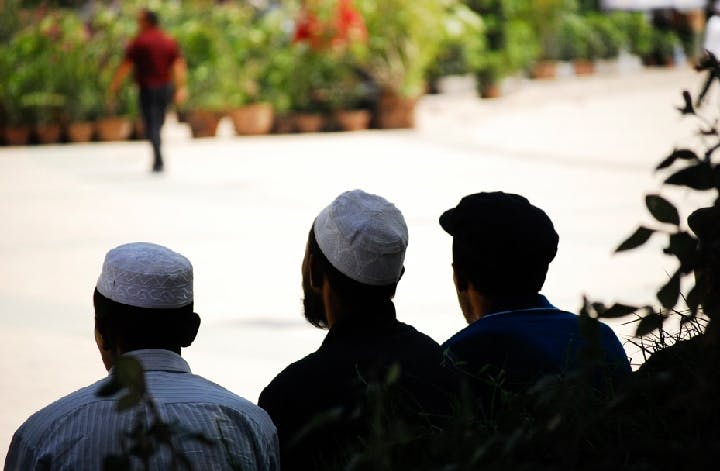The self-fulfilling prophecy of China’s anti-terrorism efforts
– Isabel Larroca
Beijing is adopting new policies to combat terrorism, but its treatment of China's Muslim Uighur population may be making the problem worse.
As millions of people worldwide prepared to observe Ramadan this year, one group of Muslims in western China were once again prevented from fully practicing the holy month’s traditions. The Uighurs, a Turkic-speaking ethnic group indigenous to the Xinjiang region, were limited in their religious observance by bans on fasting for civil servants, students, and teachers, and instructions to restaurateurs, including Muslims, to keep their businesses open. Though met each year with by resistance and criticism, the fasting ban is now an annual occurrence for Xinjiang, the result of a complicated, and often tense relationship between the region’s Muslim Uighur population and Beijing.
After Xinjiang officially became a part of Communist China in 1949, the Chinese government began encouraging Han Chinese to settle there in newly established industrial towns and farming villages. Development projects have maintained this migration, pulling the “young and technically qualified” to the region. Between 1949 and 2008, the portion of Xinjiang’s population comprised by Han Chinese increased from 6.7 percent to 40 percent. This demographic shift – combined with competition for economic opportunities and government constraints on the religious expression of Muslim Uighurs – has created a rift between the two ethnic groups and fueled calls for Xinjiang’s independence.
In recent years, conflict within the region has reached new heights. In July 2009, riots broke out between Uighurs and Han Chinese in Xinjiang’s capital, Urumqi, leading to the death of nearly 200 people. Since then, cities in the region have faced numerous attacks and clashes with police. Urumqi saw additional unrest in 2014: in April, three were killed and 79 injured by a group armed with knives and explosives, and in May, attackers crashed cars and threw explosives into a marketplace, killing 31 people and injuring more than 90. While the Chinese government has described the attackers as terrorists, it is unclear exactly who they are or what their motivations are – as explained by a BBC news report, “Information about incidents in the region…is tightly controlled.”
According to an article from Foreign Policy by Justine Drennan, Beijing has frequently characterized these attacks as organized terrorism and linked attackers to “international jihadi groups.” The increase in violent attacks and confrontations in Xinjiang has gone hand in hand with limitation of religious expression in the region — such policies are justified as being part of an effort to combat “religious extremism and terrorism.”
But Drennan points to various scholars and organizations who believe the government is exaggerating the Uighur threat. One of the more recent claims is that Uighurs have left China to join ISIS: Global Times, a news outlet with strong ties to the Chinese government, has reported that “around 300 Chinese extremists” are fighting with ISIS in Iraq and Syria, and another 300 militants are en route to join them. The reports also linked those joining ISIS to the Eastern Turkestan Islamic Movement (ETIM), a small Islamic separatist group seeking regional independence.
However, experts quoted by Drennan seriously doubt the number of Chinese ISIS recruits is as high as the Global Times claims. Nicholas Bequelin, a senior researcher with Human Rights Watch, called the reported number “implausibly high,” while Sean Roberts, a professor at George Washington University who studies Uighurs, took a less strident tone: “I assume there are Uighurs joining ISIS, but I also assume the numbers are quite small in comparison to other groups throughout the world. We’re probably talking about 20 to 30 people max.”
The intent behind the reports, as explained by anthropologist Dru Gladney in Drennan’s article, may be “to make the Uighurs look as if they’re a threat, an Islamist terrorist organization.” Beijing is able to connect separatism and frustration with government policy regarding Xinjiang to global terrorism – essentially “conflating the Uighur people’s legitimate demands for human rights, religious freedom, and democracy with international Islamic terrorism,” as Alim Seytoff, the Washington spokesperson for the World Uyghur Congress, told Foreign Policy (Seytoff’s organization uses an alternate spelling of Uighur).
Whether Beijing’s policies are meant to stem terrorism or quash separatist sympathies, they may only be making matters worse. Of the few Uighurs who may have joined ISIS, Gladney speculates that the motivation was more like likely simple resentment of China than the grand quest to establish a global caliphate. Further prohibition of religious observance would only increase this resentment, potentially driving some Uighurs to seek out jihadi groups.
Those groups certainly aren’t ignorant to the current situation. Last year, an al-Qaeda-affiliated magazine described Xinjiang as an “occupied Muslim land” to be “recovered [into] the shade of the Islamic Caliphate.” In July 2014, Abu Bakr al-Baghdadi, leader of ISIS, mentioned that Muslim rights had been “forcibly seized” in China.
Nevertheless, the clampdown on religious practices continues. In addition to the fasting ban, the wearing of Islamic veils in public spaces has been outlawed in Urumqi, and similar bans prohibit individuals wearing face veils, jilbabs, hijabs, long beards and star-and-crescent from boarding public buses in the cities of Qaramay and Ghulja. As the restrictions pile on to years of ethnic tension, and radical groups lend an ear to local frustrations, Beijing may be creating the very problem it claims to be addressing.
* * *
Further reading:
Justine Drennan, “Is China Making Its Own Terrorism Problem Worse?” Foreign Policy, February 9, 2015.
Photo courtesy of Flickr/psit
